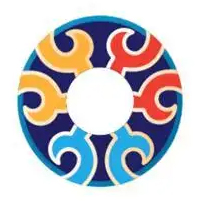The beauty of China's cloisonné.
When we talk about blue, what comes to mind? Is it Moroccan blue? Or Santorini blue? Or the blue elves on the other side of the mountain and the sea? Or is it the blue melancholy with a sad face? However, there is another kind of blue called cloisonné.
Cloisonné is a type of ware made using the technique of copper-wire inlay and enamel. It is famous for its elegant and vigorous shapes, rich and varied patterns, and solemn colors, giving people a sense of magnificent art and a blooming feeling. As one of China's famous special porcelain crafts, cloisonné originated in the Spring and Autumn period and reached its peak in the Ming Dynasty. Modern cloisonné has become a beloved handicraft.
Jingtai Blue blends the traditional style of the Chinese nation and has become a brilliant pearl in the history of Chinese arts and crafts. The varieties include tableware, utensils, aromatherapy, boxes, household items, stationery, accessories, and architectural decorations, etc. They are all available. The body shape of Jingtai Blue usually uses two materials, gold and copper, and the decorations are mostly patterns with auspicious meanings or religious and cultural significance, such as banana leaves, taotie, phoenix, cloud crane, lion playing with a ball, dragon playing with a pearl, lotus, and Chinese lotus.
The glaze colors of Jingtai Blue are mainly sky blue and sapphire blue, as well as light green, dark green, red, white, yellow, grape purple, emerald blue, and purple-red. These colors complement each other and are dazzling like gemstones.
The production process of Jingtai Blue is extremely complex, including drawing, making the body, wire-cutting, blue dotting, blue firing, polishing, and gilding, etc. It requires superb skills and rich imagination, so the shapes are also very diverse.
The artistic characteristics of cloisonné can be summarized in four words: form, pattern, color, and luster. A exquisite piece of cloisonné should first have a good shape, which depends on the process of making the vessel. Secondly, it should have beautiful patterns, which depend on the skill of wire bending. Gorgeous colors depend on the preparation of blue enamel, while a sparkling luster depends on polishing and gilding processes.
Therefore, cloisonné is the culmination of various professional techniques such as fine arts, craftsmanship, carving, inlaying, smelting, and metallurgy. It not only embodies the art of form, decorative art, environmental art, and spatial art, but also has a distinctive national style and profound cultural connotations. It is precisely because of this that cloisonné is praised as the equivalent of ten boxes of official kilns.
The process of making cloisonné tightly combines the ductility of copper and the dense characteristics of enamel, which is the crystallization of the wisdom of the ancient working people. In the historical changes of the Yuan, Ming, and Qing dynasties, diligent and intelligent craftsmen created the splendid culture of cloisonné with their own hands. This culture is deeper than Santorini blue and more brilliant than Sevres blue, illuminating the river of history and remaining ever vibrant.

